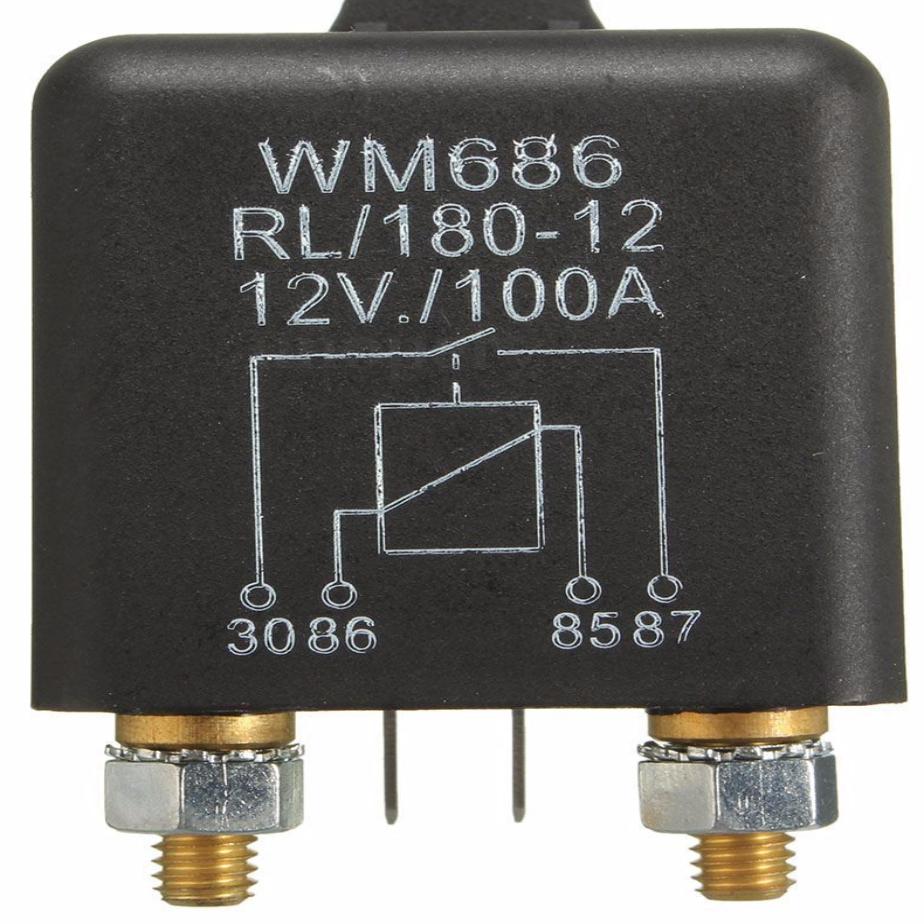Translate This Page
Battery to Battery chargers or B2B's versus "Inteligent Alternator Charging Solutions"
A Battery to Battery charger usually contains instructions to wire it between the Starter battery and the Habitation area battery with claims on boosting the charging rate. They have gained popularity because some Motorhomes have such poor Alternator charging installations with just a basic Split charge relay and undersized cabling that the room for improvement is obvious.
However, some of the marketing claims for these devices of up to 3 times faster charging are just not realistic.
Unless some really serious fault exists in the old solution, even a two fold faster charging scenario is unlikely.
Yet big improvements on some Motorhomes are available by relatively simple changes, for less than £20.
Just uprating the cable sizing and the Split Charge relay can usually bring most motorhomes with poor alternator charging rates close to the optimum. All without any battery degrading side effects.
Most B2B installation guides specify that, as part of the installation, fat cabling is used, often greater than 16mm. It is this cabling that provides 95% of a B2B's improvement in most motorhomes, not the B2B device itself.
If you follow our guide at the bottom of this web page : http://www.aandncaravanservices.co.uk/add-a-second-battery.php
(from the section after the 'giant' relay) it contains information that will enable you to upgrade your own Alternator charging system to the optimum for around £20 in parts bought from eBay and 12v Planet.
The optimum long term charging is achieved by ensuring that the batteries receive the voltage and currents as specified by the battery manufacturer, no more to ensure damage doesn't occur, but no less or slower charging will result.
Most 'intelligent' Brake recuperation style Alternators that vary the voltage dependent on load, can be 'defeated' by simply putting on the Headlights. This headlight load will force the Alternator to apply the correct, continuous charge to the habitation batteries, even on vehicles with Brake Energy recuperation.
But it isn't the ideal situation and a device that intelligently controls the voltage despite the Alternators behaviour is more appropriate for most.
Therefore the 'B2B' we suggest as the most appropriate takes power directly from the Alternator, not the Starter Battery and supplies it to the Power Distribution unit/Controller from Sargent, Schaudt, CBE or whatever system your motorhome has.
So our suggestion is not an old fashioned 'Battery 2 Battery charger' but an "Intelligent Alternator Charging Solution". Taking power directly from the Alternator additionally eradicates several possible voltage drop connections.
Most aftermarket Battery to Battery chargers are installed in exactly that way, battery to battery, bypassing the Motorhome Electronic control systems and creating issues in modern Motorhomes. Until recently that was the only option.
But that has now all changed.
There is now a solution available that offers faster charging from the Alternator to the habitation battery that works in harmony with the existing Motorhome electronics, not against it.
These units stick rigidly to the voltages and currents recommended by the battery manufacturers, so a standard Wet Acid battery will get the recommended 14.4v.
The faster charging is achieved by optimising the power from the Alternator by ensuring that whatever the input voltage into our 'B2B', the optimum is applied to the batteries.
Even if a Euro 6 or Brake Energy Recovery system is installed, where the Alternator 'suspends charging' for a time, the new style 'B2B' will go on providing a continuous voltage that is matched exactly to the battery.
There are units that have more features, like different settings for Gel, AGM or Wet/flooded batteries, Starter battery bypass, etc. They ensure that each battery type gets exactly what the battery manufacturer intended, e.g.14.3v for Gel or 14.7v for AGM, not necessarlly the Alternator's fixed 14.4v output
It does this regardless of the Alternator voltage whether it is 11v or 15v.
Even better, when the battery is full, our 'B2B' does not go on forcing 14.4v into the battery.
Just like a mains charger, it drops down into 'Float'/'Maintenance' mode of 13.4v saving fuel and prolonging battery life.
Apart from the installation of the 'charger', the wiring is unaltered in functionality. Although there are minor physical changes to insert the 'B2B', the functionality remains the same as before. Everything works EXACTLY as the Motorhome designer intended, just that now the Elektroblock/Power control unit has a rock steady, optimised Alternator feed that will ensure fast charging to the battery manufacturers optimised limit.
On a Euro 6 Caravan Tow car or Brake energy recup. system the new charger ensures the Habitation area batteries will get a continuous, full charge, not one that drops when the Motorhome ECU 'deactivates' the Alternator to save fuel.
The units we are talking about are made by the worlds biggest motorhome charger manufacturer, Schaudt.
They are the Schaudt WA 121525 and the 45amp version the Schaudt WA121545, see instructions and documentation below.
For a supplier, try Brownhills or look on eBay.
Manuals for the Schaudt WA121xxx range of Intelligent Alternator Boost Chargers -

|
Schaudt WA121525.pdf Size : 476.93 Kb Type : pdf |

|
Schaudt WA121545.pdf Size : 743.071 Kb Type : pdf |

|
sargent EC500 ec480 ec300 Dealer Technical wiring.pdf Size : 4427.024 Kb Type : pdf |
